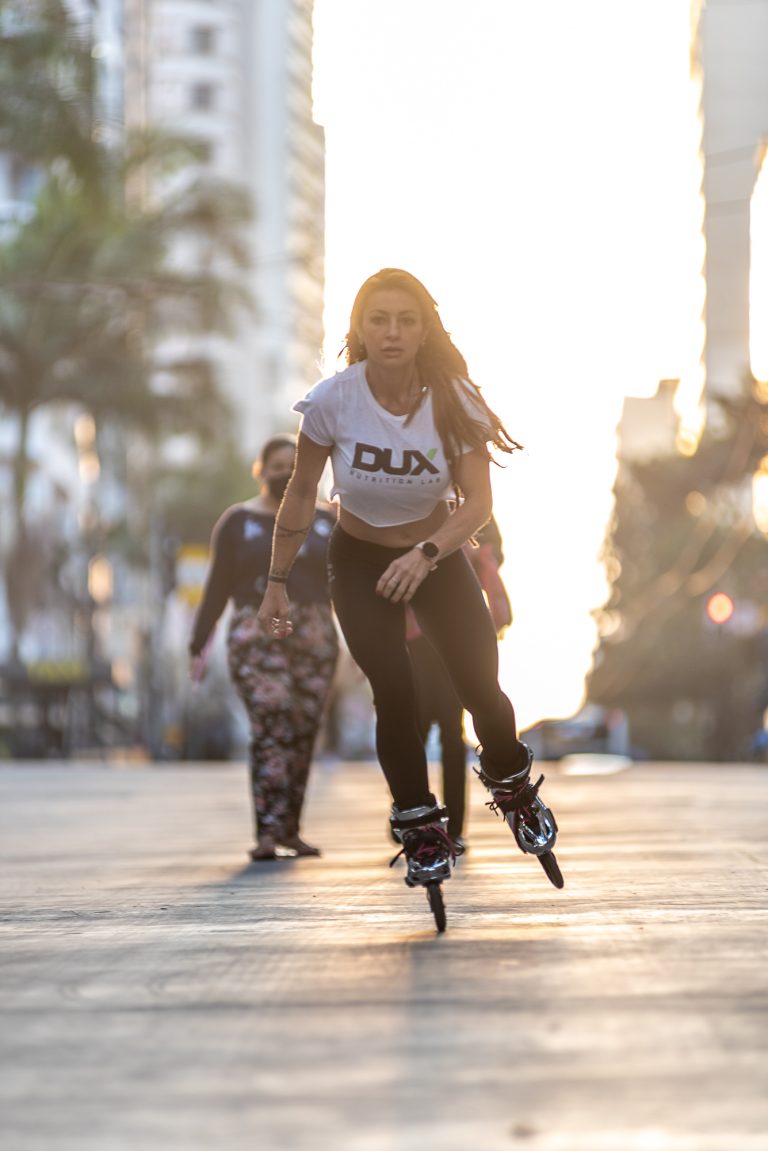WORDS: DEVON BABIN, @WORDSMITH1982.
The Bladies movement is incredibly positive and potentially one of the best things to happen to aggressive skating since the “hey-day” of the ‘90s. The sheer amount of female skaters killing it in skateparks and on the streets is motivational and inspiring, to say the least.
“I think the Bladies community is so awesome. It’s so accessible, inclusive, welcoming and supportive,” said Jenny Logue, longtime skater, former pro and X-Games competitor. “Anyone from around the world who has a pair of skates at any level from beginner to pro can actively be part of the community. I really think it’s amazing work people do to keep the community thriving through running events, social media, and putting together edits. I know that a lot of females are more driven and inspired by other females, so having access to all this female content from around the world keeps them inspired.”
With the Bladies community booming, what likely isn’t as well known is how females have not only been involved in aggressive skating from the very beginning; they have been incredibly influential and are in many ways responsible for what skating is today. For the majority of the ‘90s and early ‘00s Daily Bread Magazine was the equivalent of the bible for many skaters. It helped expose people not just in North America, but all over the world to the sport of skating and challenged skaters to push their limits and discover what’s really possible on inline skates. Daily Bread had an attitude and confidence rarely seen in aggressive skating and it probably wouldn’t have been possible without Angie Walton–the driving force behind the magazine and one of the original Team Rollerblade members. How’s that for OG?
It was the early ‘90s when the first female pro-model aggressive skate was released. The Tasha Hodgson pro-model Oxygen Argon was a milestone in aggressive skating. In fact, Tasha Hodgson, Donna Vano, and Claudia Trashel were all key influences on an individual who quickly became one of the best female inline skaters of a generation and one of the most popular aggressive skaters of all time: Fabiola Da Silva.

Fabiola Da Silva signature pro model from from 50/50 Frames.Photo by Jess Dyrenforth.
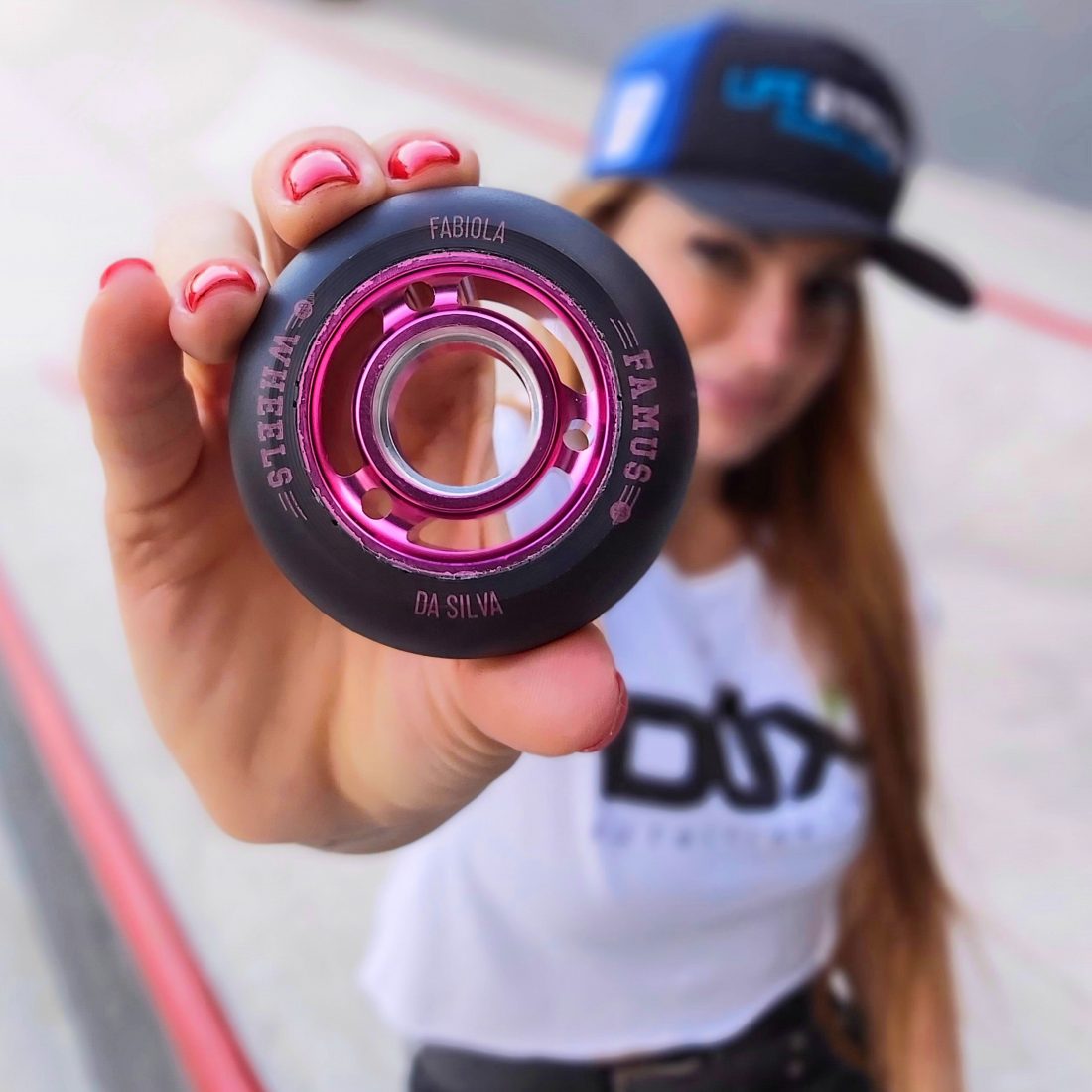
Surprisingly to some, while Fabiola did receive some pro-model products she never received a pro-model skate. “I thought that with Fabiola’s huge presence over so many years, competing and performing at such a high level not only among females but also with the men, that she might have received a pro-model from Rollerblade at the time. Maybe it was timing or something back then, as there weren’t as many pro-models made as is possible these days, but I think that would have been the most obvious pro-model that never was,” said Logue.
It’s natural to wonder how a well-known, incredibly skilled female who was on the top of the skate world for years and skated park, street and vert didn’t get a pro-model skate. If there was ever a person to help bring new, young people to the sport (especially future Bladies), it’s Fabiola.
“Well to be honest I don’t know. My dream is to have a pro skate. I guess it’s every skater’s dream. You guys tell me the reason. I truly don’t know,”
Fabiola Da Silva
We can speculate about the past, but it’s important to look a little deeper into the current makeup of aggressive skating. How many aggressive skaters are out there and just how many are Bladies? It’s hard to know for sure, but compared to other forms of inline skating, aggressive skating is still male-focused, but that trend is changing.
“It’s hard to say how the market is right now. I think roughly it was a 90% male market and now I feel with the female segment picking up it could have grown closer to 20%. Of course, the goal for every sport is to have 50% male and 50% female.” said Matthias Knoll, founder and CEO of Powerslide.

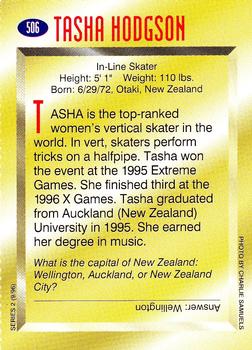
“Aggressive and also urban have been male-dominated and I still remember the old times when skaters even said girls were not perfect for the skating image. Luckily those days are changing. In other segments like fitness or even racing, girls and women make up 50 per cent of the market, so it has been easier to support female teams and skaters. In recent years, and thanks to the Bladies movement, this has changed drastically. More girls have gone into inline skating. New talents are coming up and older female skaters are coming back and skating at high levels.”
Of course, there have been some female pro-model products and even a female pro-model skate since the days of Tasha Hodgson’s pro skate and Dawn Everett’s pro wheel, but they were sporadic at best up until recently.
“I think female pro-models and signature wheels, etc. have been few and far between, but also the ratio of female to males in the sport might have been a similar ratio,” said Logue. “Jenna Downing had a pro wheel in the UK and a pro skate from Razors. Fallon (Heffernan) also had a pro-wheel. I guess it comes down to a business decision in the end, from the companies making the products to having to run the numbers to see if there is a big enough market to invest in the products.”
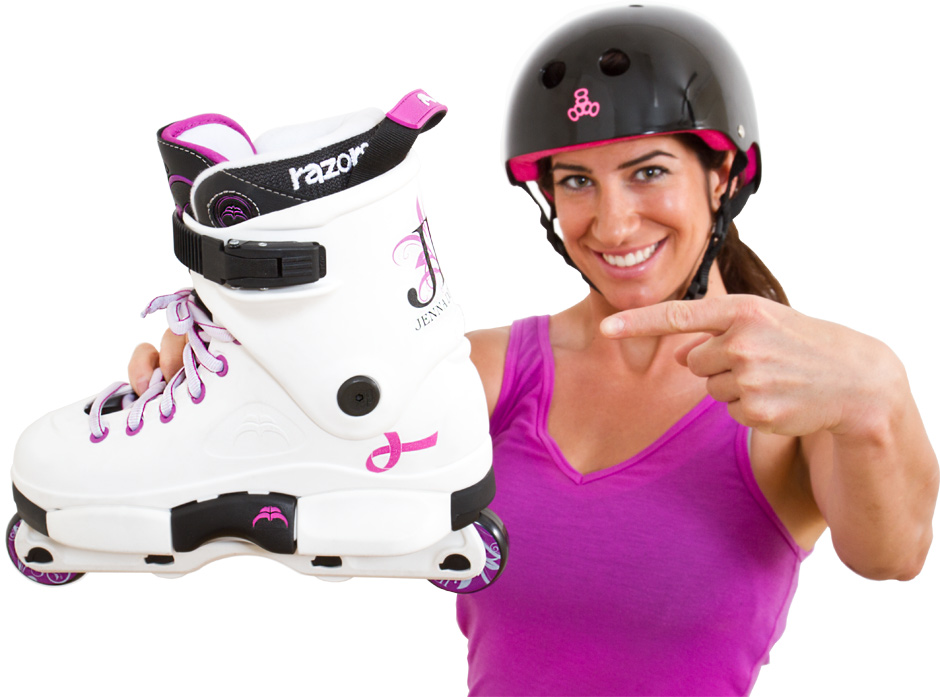

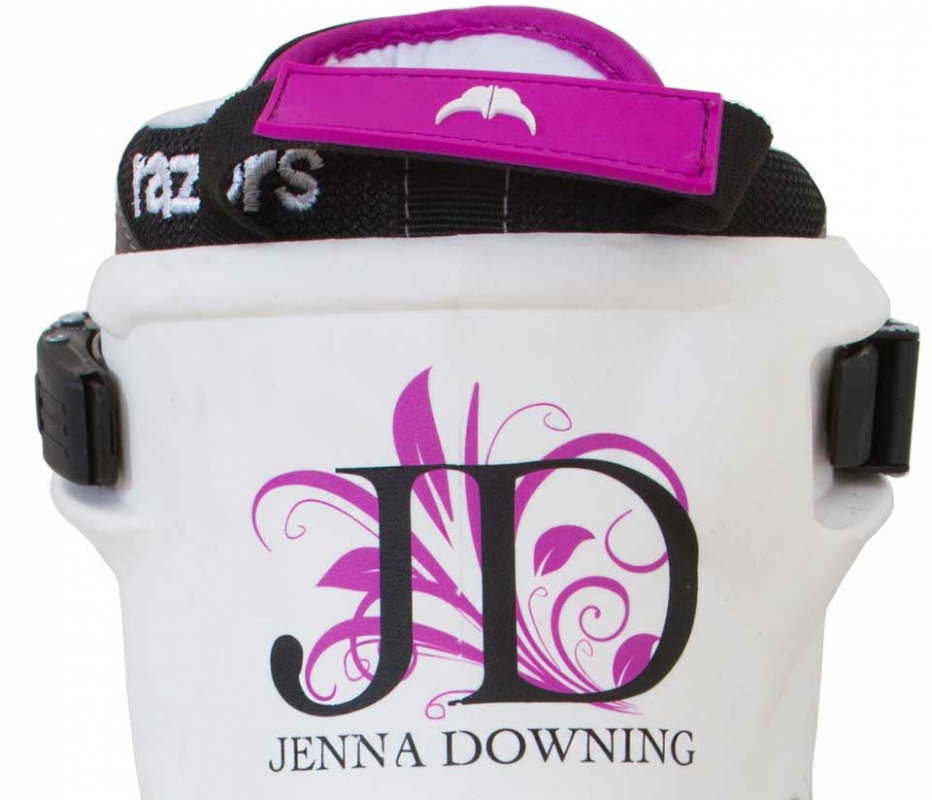
With the release of the Mery Muñoz Pro Aeon, Chynna Weierstall’s Pro Wheel—and even the Bladies Aeon that was released a couple of years ago by USD and the Bladies brand—there are signs that there will be more and more products developed for female skaters. Razors has the Loca sub-brand of skates aimed at female skaters and as of Blading Cup last November has partnered with the Bladies brand to release a Bladies version of the Shift skate. And most recently Faction announced they have added Chynna Weierstall to their pro team.
“As there wasn’t a lot of exposure to female inline skaters after the ‘90s, so it was hard to prove we were a ‘safe’ move. With the Bladies skate, Megan (Petersen) and I proved to the world that we are the future,” said Mery Muñoz. “It was awesome to see how great it turned out. I encourage other brands to support more female riders by investing in us. We are hard workers and are waiting for the opportunity to go all-in!”
“I think all brands have to start somewhere. We started with Mery’s pro skate which did great. Mery is also getting an Urban pro skate. In ‘22 and ‘23 we plan many more pro skates in aggressive and urban for girls and also more colorways focused on female skaters. So hopefully we are on a good path to show young girls and all females they have a bright future in blading, can go pro and live their dreams,” said Knoll.

Nicoly Machaddo is a young female skater who has taken over Instagram skating street, park and even cruising on her big wheels. Recently added to the USD, ENNUI, and Powerslide teams, Nicoly has a bright future ahead of her and sees big things for female skaters in the near future.
“I am a young skater, but I can understand the importance of women to conquer their pro-models. I am very happy with this new moment of recognition, but I believe that we women can conquer more within the world market. A current opportunity is social networks – we have great tools to show our strength and work,” said Machaddo. And there certainly are signs that the Bladies movement is continuing to thrive worldwide with Bladies categories in all major competitions, including Blading Cup, Franky Morales Invitational, Winterclash, and the FISE series. But it goes well beyond competitions.
“I have definitely seen a lot more younger girls getting into skating in the last few years, which is awesome,” said Aarin Gates, well-known Bladie who also works at Carriers Skateshop in Plano, Texas. “Quite a few of the girls I’ve met got into it because of their parents or family members who also skate/skated in the past. Also seeing a lot of quad skaters getting onto blades and learning both, which brings a whole new outlook to the blading side.”
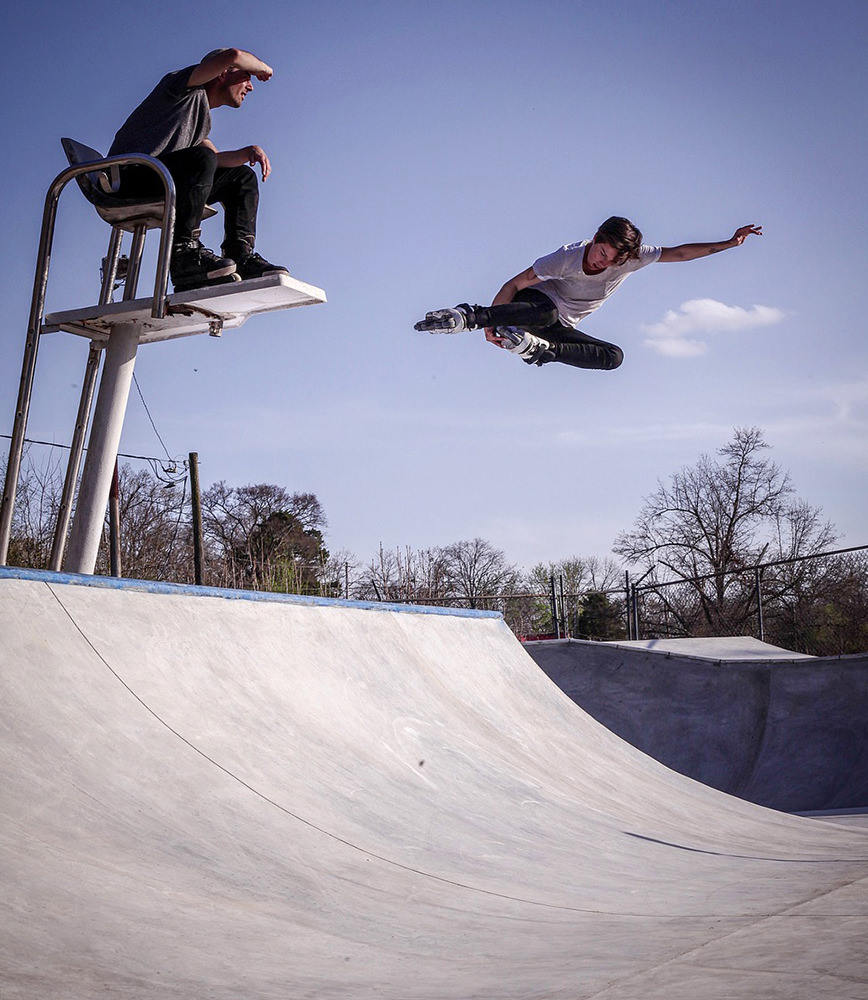
Aarin Gate-Stale grab. Photo by John Sullivan
Looking more globally, there are many regions where skating is growing, especially among females. “Brazil skating has been growing very fast in the last two years,” said Machaddo. “Here in the south of Brazil where I live, we had an atypical situation where several girls started to skate together, the name of this movement became known as, ‘the street skate girls’. We were like 20 girls starting and no boys. In the last two years, the generation here is renewing itself and I am very happy to be a part of it.”
From an overall industry perspective, although inline skate sales are declining after the surge of sales seen over the past couple of years, sales of female skates are going strong. “After the COVID-19 boom I think skating, in general, is dropping, but I see the girls faction actually going stronger and also some girls from rollerskates are crossing over. The nice thing is there is no more Inline vs. Rollerskate animosity – they’re merging into one family and all support each other,” said Matthias Knoll.
“I see the Bladies category growing and if you look at the new rising and upcoming female skaters around the world it looks very very promising. I think every brand will grow with some girls and brands including more women on their pro teams,” said Knoll. “Some other brands like IQON–where I’m partially involved too–Montre (Livingston) is the team manager and has the vision to have a team made up of half female skaters and half male skaters, which I think is great and should be a goal for all brands. There are lots of great new up-and-coming Bladies including young girls who are already super good all over the world. The Bladies future looks great for me.”


Mery Muñoz and her first signature skate model from USD Skates
While the ultimate goal for many skaters is to have their own pro-model skate, and for good reason, the concept of being a pro skater is a little more complex than simply having a skate with a name on it. “The costs for a signature pro skate are almost the same as a standard skate, but in most cases, it takes longer to get the look and parts the skater wants to be perfected. Not only color but also specs,” said Matthias Knoll.
“Pro skates are the ultimate dream for many bladers so they must be right for them so they still can show them to their grandkids. For royalties, we talk to team managers. For USD this is with Sam, Eugen and Kenneth–USD’s longtime designer–and our pros give feedback too. As a team, we discuss what is possible for the company and how to split it. Do we go only with royalties like some brands? Or do regular monthly payments and incentives make more sense? At USD we believe that we have a good mix of monthly payments, incentives, and raised royalties for the pros.”
For skaters looking to make a living off skating, salaries, incentives, and royalties are all important, but pro-models can also serve a different purpose, and that’s attracting people, in this case Bladies, to the sport. “I really do think that more female pro products are important because they give younger girls something to see and have to work towards, and would hopefully help bring more colorful and ‘cute’ products to the market, such as the Bladies skate,” said Aarin Gates. “I’ve honestly seen quite a few females choose to ride quads over blades because there were more ‘cute’ options to choose from. Obviously that’s not the case for all Bladies, but I think it would definitely help appeal to the masses.”
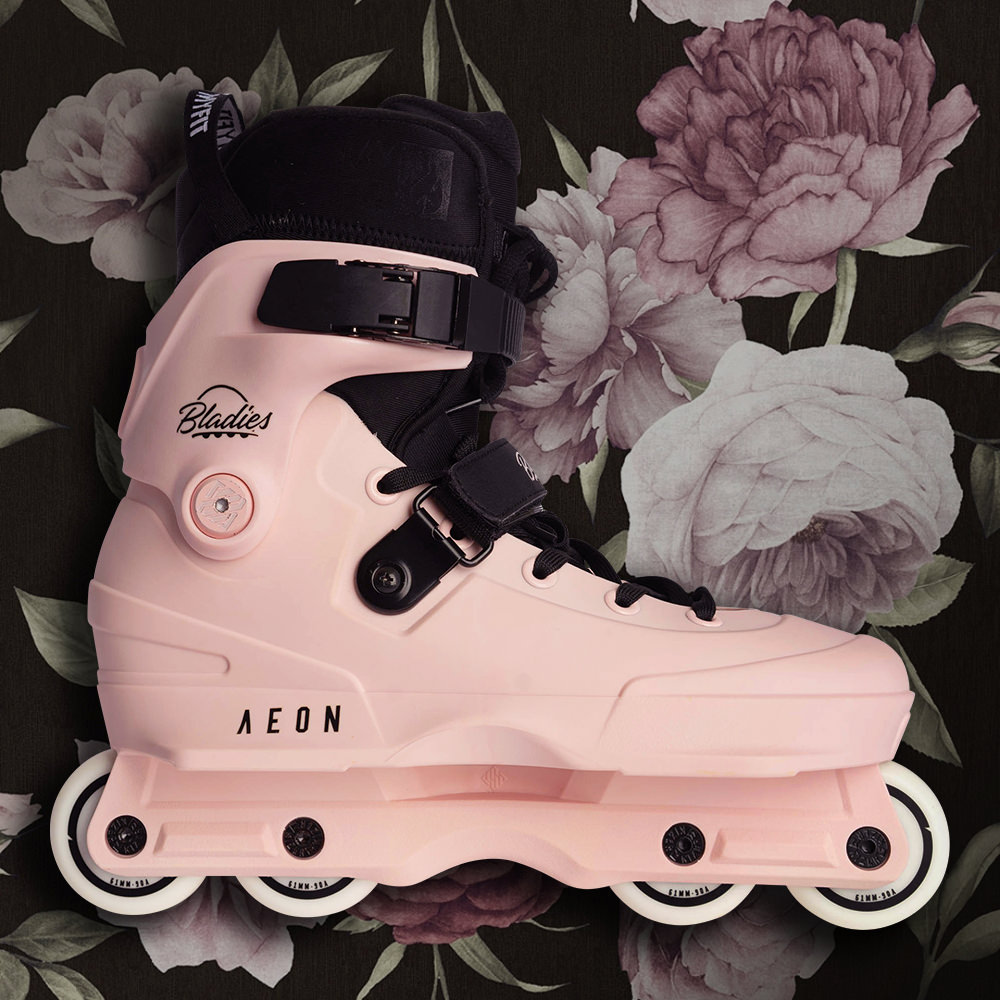
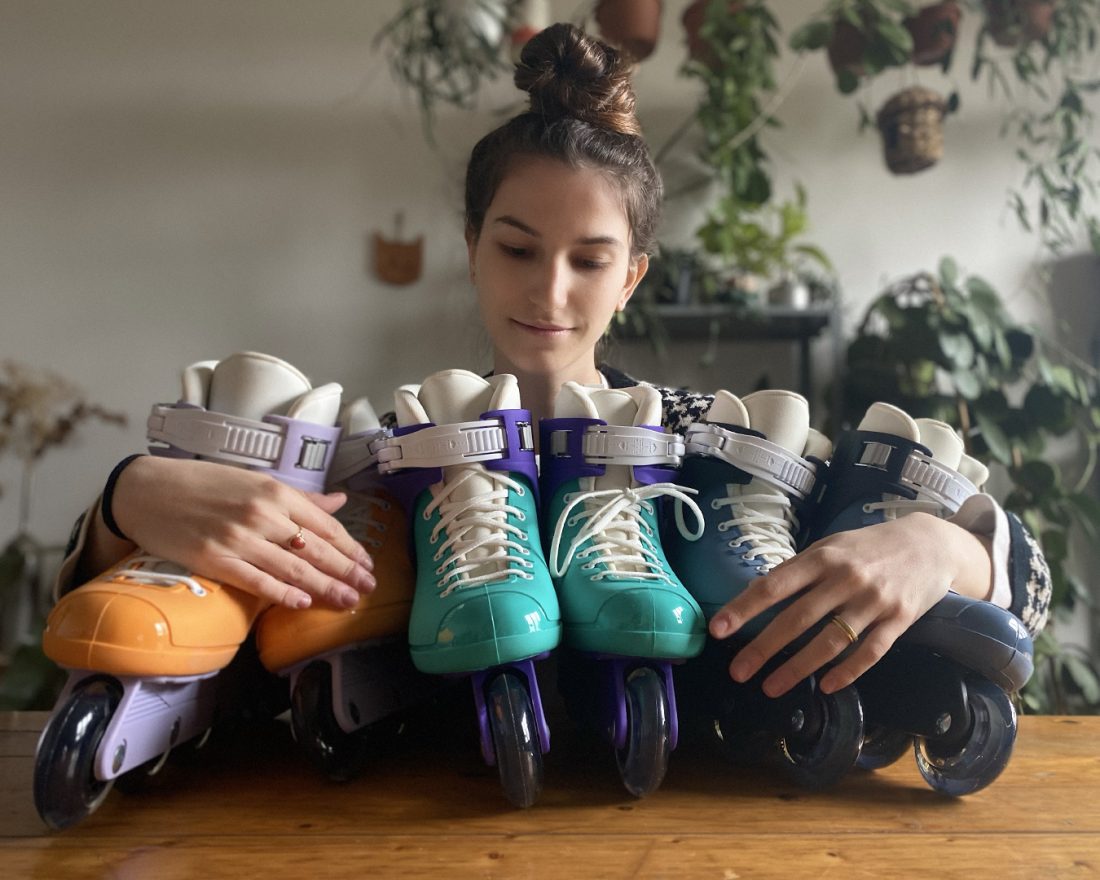
Martina Margiotta, team manager for Roces Skates.
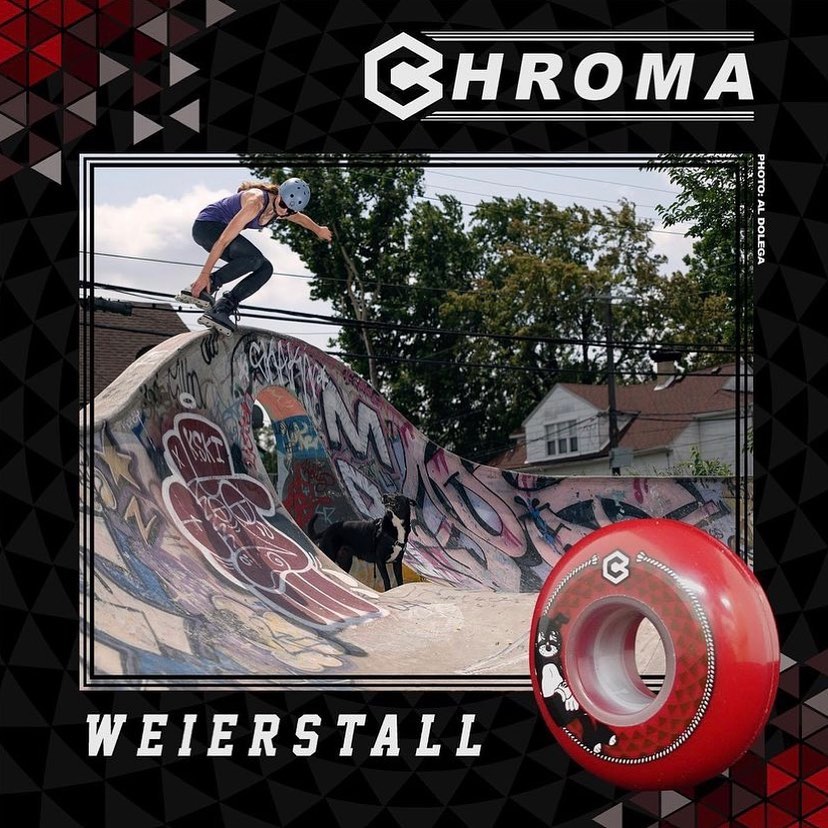
Chynna Weierstall Chroma signature wheel ad. Photo by Al Dolega.
As the recognition of talented female skaters continues to happen in front of the cameras, some feel there is a need for more females “behind the scenes” in the aggressive skating world–from marketing to product design, to media, to teaching, to building skateparks and all other aspects of the sport. “I think is very important for the women to get involved in everything. The industry needs a woman’s touch, vision and ideas that only women come up from a ladies’ perspective,” said Da Silva.
And Muñoz agrees.
“As Manon Derrien and I judged our first contest in France last weekend with FISE rules we discussed with Mathieu Heinemann how important it was to start having female judges for all events. It was interesting to compare our opinions and point of view. I also look up a lot to Martina from Roces as she’s doing an excellent job of marketing the Roces team. Riders nowadays are like freelance artists, we learn about everything that has to do with the inline industry because we love it and want to keep being part of it. So yes, we need more women involved, because our opinions matter. My long-term plan is to keep filming or become a team manager to improve the things we want to change for the future of our sport.”
Not all Bladies and not all people have the same experiences in skating and that can come down to a lot of factors – location, age, education, skills, among other factors. “I think it’s important to have a diverse set of people in any industry, however, I don’t know the employment info of any other country really than Australia for this industry, and here we seem to have a healthy representation of females actively involved in roles such as retail, distribution, design, and social media management,” said Logue.
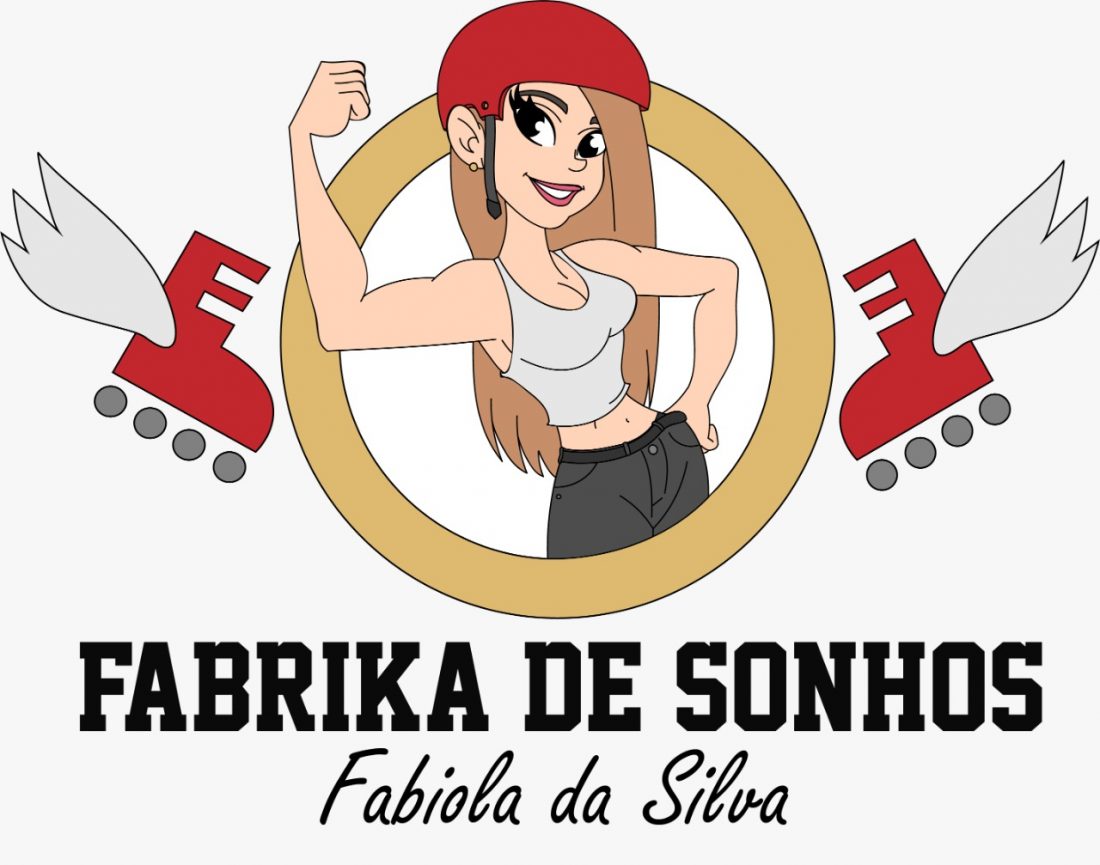
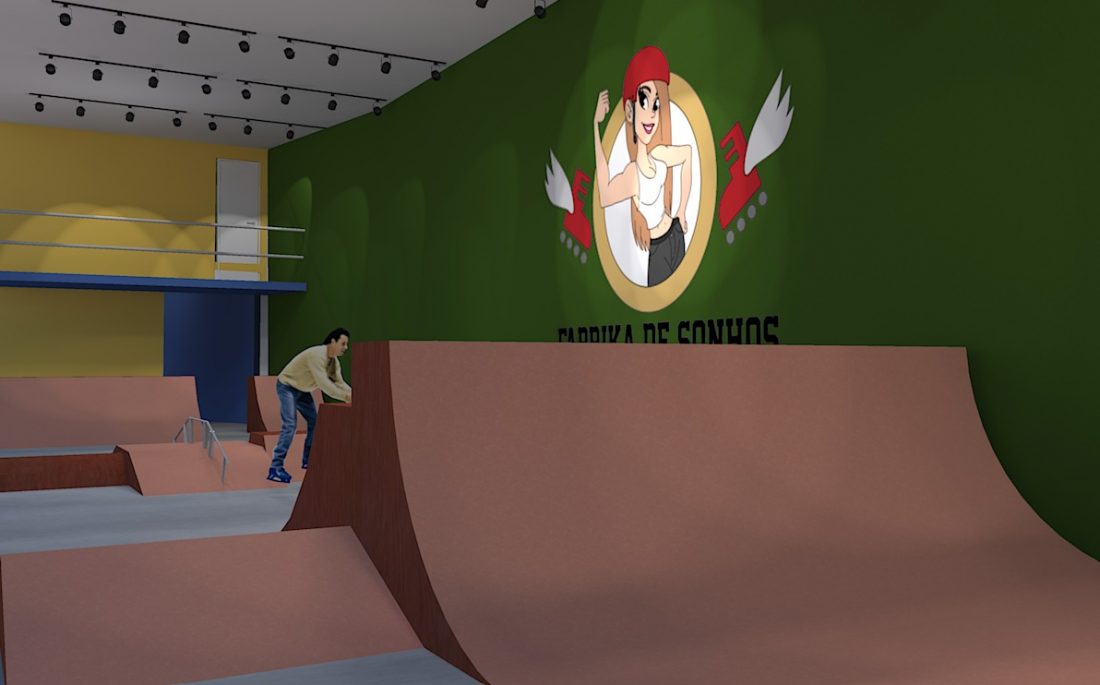
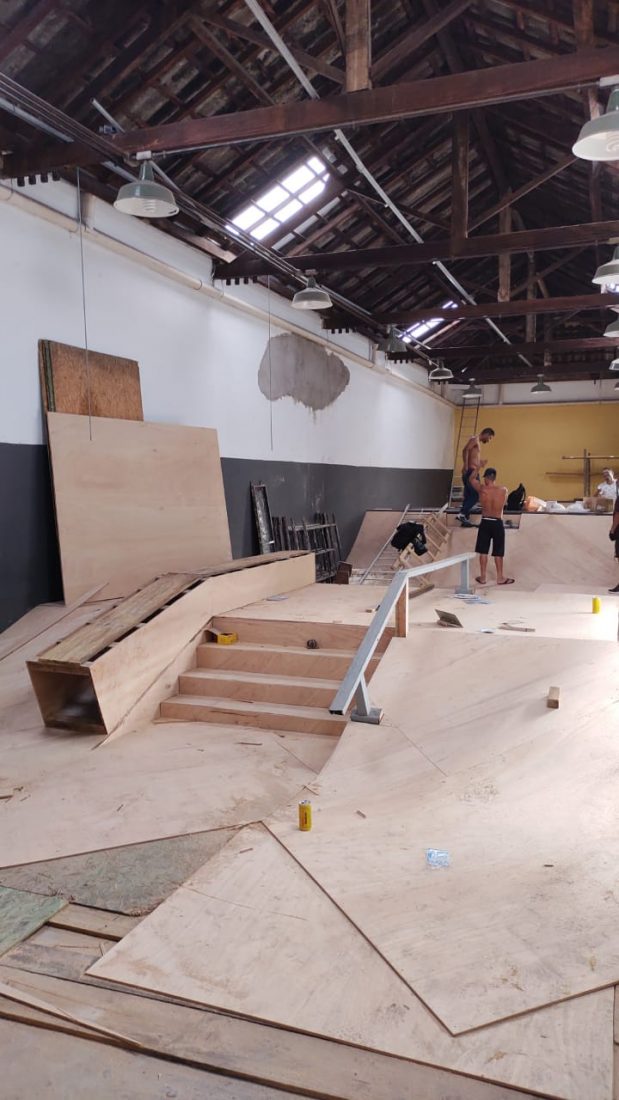
Fabiola Da Silva is building her own skatepark in Brazil. What many people may not know is that Fabiola has never stopped skating and holds the sport incredibly close to her heart. “At the moment I’m finishing my own skatepark here in Brazil. I’m opening it at the end of 2022. This skatepark is one of my dreams becoming reality. I’m going to have the opportunity to introduce the sport to the young generation and adults while also having a positive and healthy environment so parents can leave the kids to learn an awesome sport. Rollerblading, skateboarding, BMX, and scootering are all welcome to my park!”
If the skatepark is a dream becoming reality, there is one more dream Fabiola would like to happen. Fabiola still wants a pro skate and it’s hard to think of a more deserving person. Of course, there are many talented many female skaters who deserve pro skates, but she is certainly near the top of the list.
“I want to have a pro Roces skate and I think it’s still possible, I have been skating for 30 years. I’m 42 years old and very athletic. Nothing has changed for me. I still travel doing speeches and for the past 5 years, I have been teaching kids and adults how to skate. I really believe the sport can transform lives.”
Fabiola Da Silva
What comes next for the female skaters is still up in the air, but what’s certain is Bladies have a momentum behind them not seen in years and potentially ever. As more female skaters enter the sport, push their limits, and prove that they are a foundational part of aggressive skating, they will continue to earn their fair share of the spotlight. Hopefully, that spotlight will see more female pro riders, signature products, liveable wages, and women taking on more “behind the scenes” roles in an industry they have always been part of, although not always properly recognized.
Move over gentlemen, the Bladies are here to stay.
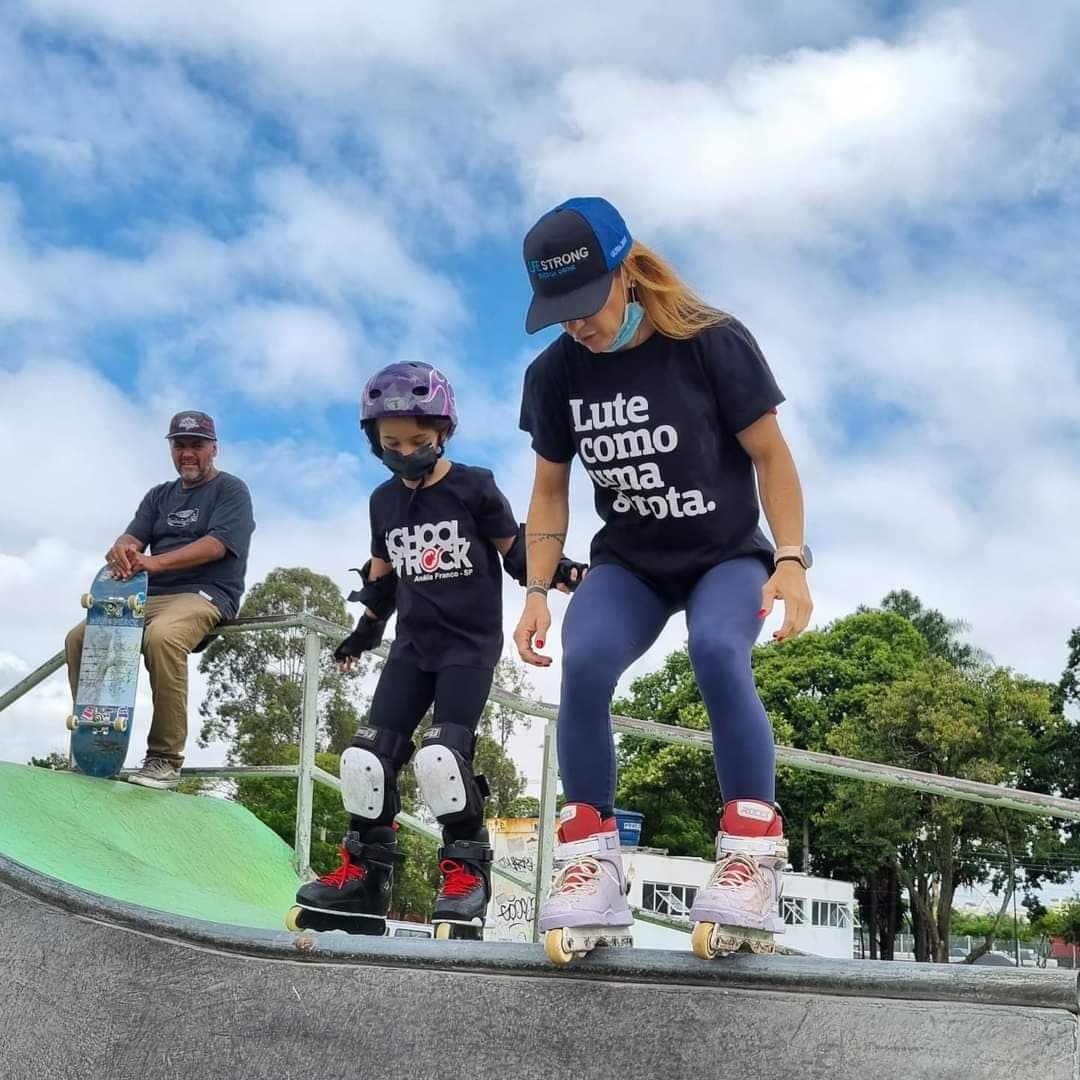

Fabiola Da Silva- Invert. Photo by Angelo Antonio




